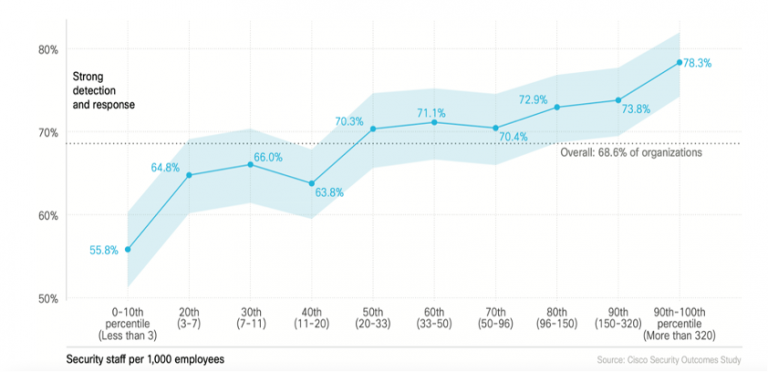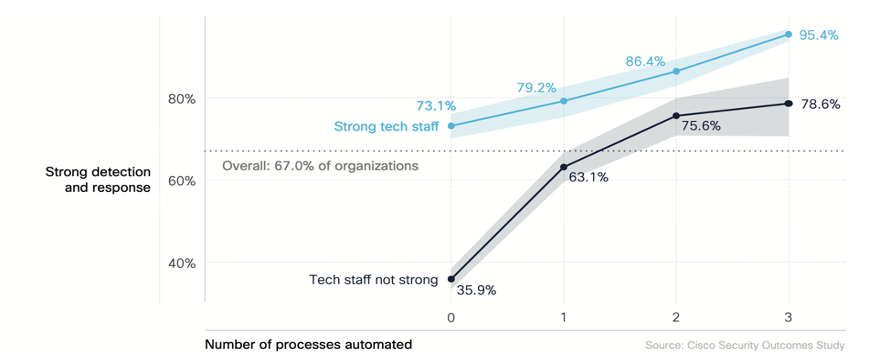
As Internet-Connected Medical Devices Multiply, So Do Challenges
June 16, 2022
Introducing Viva Sales, a new modern way of selling that brings together any CRM, Microsoft 365, and Teams
June 20, 2022People: A cornerstone for fostering security resilience

Security resilience isn’t something that happens overnight. It’s something that grows with every challenge, pivot and plot change. While organizations can invest in solid technology and efficient processes, one thing is critical in making sure it translates into effective security: people.
What impact do people have on security resilience? Does the number of security employees in an organization affect its ability to foster resilience? Can a lower headcount be supplemented by automation?
In a world where uncertainty is certain, we recently explored how people can contribute to five dimensions of security resilience, helping businesses weather the storm.
Through the lens of our latest Security Outcomes Study – a double-blind survey of over 5,100 IT and security professionals – we looked at how people in SecOps teams can influence organizational resilience.
Strong people = successful security programs
SecOps programs built on strong people, processes and technology see a 3.5X performance boost over those with weaker resources, according to our study. We know that good people are important to any organization, and they are fundamental to developing capable incident response and threat detection programs.
Why are detection and response capabilities important to look at? Because they are key drivers of security resilience. In the study, we calculated a ratio of SecOps staff to overall employees for all organizations. Then, we compared that ratio to the reported strength of detection and response capabilities.

What we can clearly see is that organizations with the highest security staffing ratios are over 20% more likely to report better threat detection and incident response than those with the lowest. However, the overall average highlights that organizations not on the extreme ends of the spectrum are more likely to report roughly equal levels of success with SecOps — indicating that headcount alone isn’t a sure indicator of an effective program or resilient organization. It can be inferred that experience and skills also play a pivotal role.
Automation can help fill in the gaps
But what about when an organization is faced with a “people gap,” either in terms of headcount or skills? Does automating certain things help build security resilience? According to our study, automation more than doubles the performance of less experienced people.

In the graph above, the lines compare two different types of SecOp programs: One without strong people resources, and one with strong staff. In both scenarios, moving to the right shows the positive impact that increasing automation has on threat detection and incident response.
Out of the survey respondents, only about a third of organizations that lack strong security staff, and don’t automate processes, report sound detection and response.
When one of three security process areas (threat monitoring, event analysis, or incident response) is automated, we see a significant jump in capability among organizations that say their tech staff isn’t up to par. Automating two or three of these processes continues to increase strength in detection and response.
Why does this matter? Because over 78% of organizations that say they don’t have adequate SecOps staffing resources still report that they are able to achieve robust capabilities through high levels of automation.
A holistic approach to security resilience
When it comes to security resilience, however, we have to look at the whole picture. While automation seems to increase detection and response performance, we can’t count people out. After all, over 95% of organizations that have a strong team AND advanced automation report SecOps success. Organizations need to have the right blend of people and automation to lay the foundation for organization-wide security resilience.
As your business continues to look towards building a successful and resilient SecOps program, figuring out how to utilize your strongest staff, and where to best employ automation, will be a step in the right direction. Learn about other ways to build your organization’s security resilience to meet future challenges.
For more key findings, download the full
Security Outcomes Study
We’d love to hear what you think. Ask a Question, Comment Below, and Stay Connected with Cisco Secure on social!
Cisco Secure Social Channels

